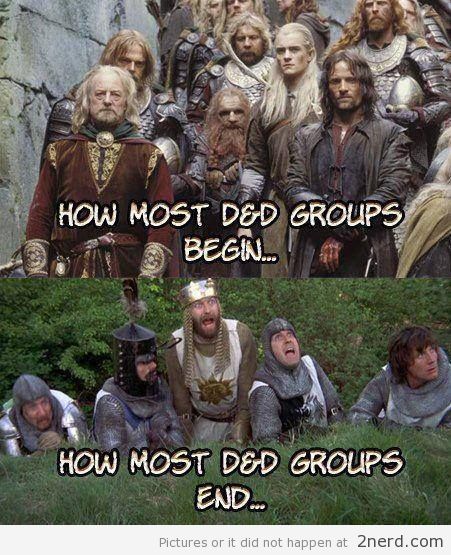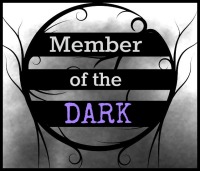Originally posted on December 12, 2013 . . . Day 12 of this blog’s existence. Wow. This is also really long. I tried to clean it up, but it’s a topic that keeps coming back.
At the age of thirteen, I was introduced to Dungeons & Dragons, which opened the door to several other dice-based roleplaying games. This hobby lasted through college and a few years beyond. If you think I’m outing myself as a nerd/geek/dweeb/whatever then understand that you would get this vibe from me within fifteen minutes of us talking. That’s being generous because I look the part, but that’s not the point of this post.
When I hit college, I realized that the characters I was playing and the games I was either in or running would make good stories. So for some games, I asked permission to write books based on the adventures and for others games I simply tested out characters. This method of story and character testing is what led to the creation of Windemere and many of the major heroes that I use. Unfortunately, this method also came with a major flaw that I did not realize until I sat down to write Beginning of a Hero.
The flaw is that what works for a game does not always work for a book. Very few secondary character conversations happen in games and many long campaigns devolve into battle after battle after battle. Your heroes start incredibly weak and level up, which does not translate well to a book setting because leveling is rather abrupt. Imagine if you are reading a book, a battle happens and suddenly one of the heroes instantly knows archery. In the book, you would have to give the character a reason to learn, time to learn, and a teacher, which takes away from the overall story. The ways to counter this is to either have the new skills learned between books or start the heroes off with a believable level of experience. I’m not talking perfect, but able to handle themselves in whatever role they are designed for. The best example of this is Nyx who debuts in Prodigy of Rainbow Tower. In the game, she began with only one or two combat spells, which led to her getting knocked out at least once per game. In the character’s defense, the player (now my wife) was new to the hobby and had a habit of rushing into battle like she was a warrior. It was adorable, but not a good thing to transfer to a book. So I had ‘book Nyx’ start with incredible magical power and her challenge came from keeping it under control and fine-tuning her abilities. This made the book version and the game version incredibly different in ability, evolution, and personality.
Another part of this flaw is that many players will act out a character in either the same way or so off-the-wall that you have to change it for the book. Noble heroes are the most common because they are the easiest to play, but there is very little difference in personality for these types. This is where character flaws and strategies come in. For example, two noble heroes that appear in Legends of Windemere are differentiated by one being a reckless warrior and the other being a strategic warrior. In a game, the wild one is more likely to die because of a bad roll of the dice. So for many characters I had to design new personalities with more depth, which is easier to do in a book because the author makes the rules. My psychotic vampire from Vampire the Masquerade can be more monstrous and violent in the book than he ever was in the game because he doesn’t have stats to prevent his rages.
One of the biggest downsides to using games for book influence is that a person can leave the game when they stop having fun or have something better to do. Legends of Windemere never made it to the end of the game. I’m not even sure it made it to the halfway mark. I do know that over the years several players left for various reasons, leaving gaps in the plot and issues for my books. So you can probably figure out which characters belong to players who left. At one point, over half the gaming group dropped out, which left me with a weekend of figuring out what to do with their characters. Eventually, I stopped following the game and use it as a loose outline for stories. The game could change its plot and only those of us in the group would know, but I couldn’t make essential characters expendable in the book after giving them major build-ups. I remember the biggest disaster that this came up with was when a character was introduced and the player left college in less than a semester. This would be Sari Within that semester, our lovable gypsy became an essential part of the plot’s prophecy and the relationship with Luke had kicked in. So, she went through several kidnappings, comas, and other instances until the gamemaster and I had an argument on what to do. He wanted to kill her off while I didn’t see how the game could continue without her. It was entirely doable now that I look back on it, but not for the books. The destiny was set up so that one hero falling would require a new one to be born and all 6 were needed to get to the final battle. Not going to take an infant into battle. This is probably a perfect example of the different mentalities behind games and books. In the end, I had to redesign Sari for the books and redesign most of the events to include her because she was never around in the game. To this day, she is one of my favorite characters and I always feel sorry for some of the things I do to here.
I think of this topic a lot because I remember the characters and people that I gamed with every time I write the book scenes. Even the characters that I played are different than the one I spent years tracking stats and gear for. He has become a lot more powerful, a lot deeper, and a lot more believable. It is that last part that is strange to me because it really shows that when people play games of make-believe, they really don’t want to touch too much of reality. Many game characters lack flaws or are given minor flaws for the sole purpose of getting more points to increase stats. Rarely did you find someone who took a flaw because they wanted to act out the flaw because in the end for the players, the game was about winning and not about the story. It is a different mentality than the one of an author nurturing characters along their literary path. I have no sense of stats or dice when I write my scenes, which makes many of the game events impossible to transfer.
I would like to say that I treated every character with love and respect when I altered their backgrounds and skills to fit into Windemere. The truth is that some things simply could not be transferred and other things I never understood or liked in the first place. Heck, I’m still not sure about some of the character’s original backgrounds because they were never delved into in the game. I guess this is the risk people take when they try to transfer from a medium of multiple minds to a medium of the single mind.







I played D&D briefly, because my boyfriend then was really into it. We broke up so I stopped. But this is the group I went to Ren Fairs with. Your post brought back good memories. I appreciated learning about your process. And I think it’s sweet that your wife played too. 🙂
I see what you mean though about swift leveling not working for a book. Tension helps us turn pages. And if the characters instantly learn things, the tension dies.
LikeLike
She tried. 😀 Seriously though, she tended to play the temperamental female character rather often. So if my books have that type, you can make a safe bet that she played the character in a game.
LikeLiked by 1 person
That’s what makes your books seem realistic though they are fantasy books. 🙂 That also was me: the temperamental female character.
LikeLike
Well, Nyx had to get a big overhaul before making her debut. D&D wizards have terrible early spells and physical abilities for combat. So she had a habit of rushing in with her dagger held high and getting knocked out. Seems to be a better tactic now that Nyx can lay waste to a small army.
LikeLike
All over my head but like to read the background.
LikeLike
Yeah. That’s another reason the game and book had to be different. People that never played will feel like something is off if the books were identical to the game.
LikeLiked by 1 person
I can see that .
LikeLike
I’m so glad you decided to repost this. It offers me a fascinating new insight to your process and to Windemere!
LikeLike
The topic comes up a lot when I mention the books started as a game. It’s kind of fun to hear people guess at the parts that made the cut too. 🙂
LikeLiked by 1 person
Pingback: Legends of Windemere: The Game and the Series | Legends of Windemere